
Yale University is a private Ivy League research university in New Haven, Connecticut. Founded in 1701 as the Collegiate School, it is the third-oldest institution of higher education in the United States and one of the nine Colonial Colleges chartered before the American Revolution. The Collegiate School was renamed Yale College in 1718 to honor the school's largest private benefactor for the first century of its existence, Elihu Yale.

The Beinecke Rare Book & Manuscript Library is the rare book library and literary archive of the Yale University Library in New Haven, Connecticut. Situated on Yale University's Hewitt Quadrangle, the building was designed by Gordon Bunshaft of Skidmore, Owings & Merrill and completed in 1963. Established by a gift of the Beinecke family and given its own endowment, the library is financially independent from the university and is co-governed by the University Library and Yale Corporation. It is one of the largest buildings in the world entirely dedicated to rare books and manuscripts.
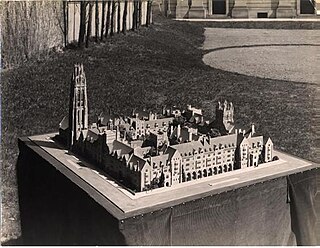
The Memorial Quadrangle is a residential quadrangle at Yale University in New Haven, Connecticut. Commissioned in 1917 to supply much-needed student housing for Yale College, it was Yale's first Collegiate Gothic building and its first project by James Gamble Rogers, who later designed ten other major buildings for the university. The Quadrangle has been occupied by Saybrook College and Branford College, two of the original ten residential colleges at Yale. The collegiate system of Yale University was largely inspired by the Oxbridge model of residential and teaching colleges at the University of Oxford and the University of Cambridge in the UK.

Sterling Memorial Library (SML) is the main library building of the Yale University Library system in New Haven, Connecticut, United States. Opened in 1931, the library was designed by James Gamble Rogers as the centerpiece of Yale's Gothic Revival campus. The library's tower has sixteen levels of bookstacks containing over 4 million volumes. Several special collections—including the university's Manuscripts & Archives—are also housed in the building. It connects via tunnel to the underground Bass Library, which holds an additional 150,000 volumes.
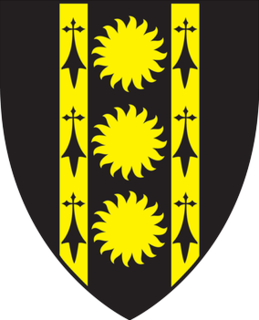
Pierson College is a residential college at Yale University in New Haven, Connecticut. Opened in 1933, it is named for Abraham Pierson, a founder and the first rector of the Collegiate School, the college later known as Yale. With just under 500 undergraduate members, Pierson is the largest of Yale's residential colleges by number of students.

Silliman College is a residential college at Yale University in New Haven, Connecticut, named for scientist and Yale professor Benjamin Silliman. It opened in September 1940 as the last of the original ten residential colleges, and contains buildings constructed as early as 1901.

Jonathan Edwards College is a residential college at Yale University. It is named for theologian and minister Jonathan Edwards, a 1720 graduate of Yale College. JE's residential quadrangle was the first to be completed in Yale's residential college system, and was opened to undergraduates in 1933.
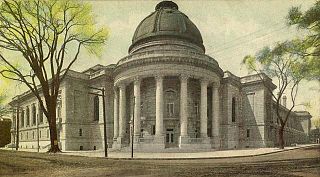
Woolsey Hall is the primary auditorium at Yale University, located on the campus' Hewitt Quadrangle in New Haven, Connecticut. It was built as part of the Bicentennial Buildings complex that includes the Memorial Rotunda and the University Commons, designed by the firm Carrère and Hastings for the Yale bicentennial celebration in 1901. With approximately 2,650 seats, it is the university's largest auditorium and hosts concerts, performances, and university ceremonies including the annual freshman convocation, senior baccalaureate, and presidential inaugurations. The building is named for Theodore Dwight Woolsey, President of Yale from 1846 through 1871.

James Gamble Rogers was an American architect. He is best known for his academic commissions at Yale University, Columbia University, Northwestern University, and elsewhere.

Carrère and Hastings, the firm of John Merven Carrère and Thomas Hastings, was one of the outstanding American Beaux-Arts architecture firms. Located in New York City, the firm practiced from 1885 until 1929, although Carrère died in an automobile accident in 1911.

The Old Campus is the oldest area of the Yale University campus in New Haven, Connecticut. It is the principal residence of Yale College freshmen and also contains offices for the academic departments of Classics, English, History, Comparative Literature, and Philosophy. Fourteen buildings—including eight dormitories and two chapels—surround a 4-acre (1.6 ha) courtyard with a main entrance from the New Haven Green known as Phelps Gate.

Pompeo Luigi Coppini was an Italian born sculptor who emigrated to the United States. Although his works can be found in Italy, Mexico and a number of U.S. states, the majority of his work can be found in Texas. He is particularly famous for the Alamo Plaza work Spirit of Sacrifice a.k.a. The Alamo Cenotaph, as well as numerous statues honoring Texan figures.

The Elizabethan Club is a social club at Yale University named for Queen Elizabeth I and her era. Its profile and members tend toward a literary disposition, and conversation is one of the Club's chief purposes.

Connecticut Hall is a Georgian building on the Old Campus of Yale University. Completed in 1752, it was originally a student dormitory, a function it retained for 200 years. Part of the first floor became home to the Yale College Dean's Office after 1905, and the full building was converted to departmental offices in the mid-twentieth century. It is currently used by the Department of Philosophy, and its third story contains a room for meetings of the Yale Faculty of Arts & Sciences, the academic faculty of Yale College and the Graduate School.

The Lillian Goldman Law Library in Memory of Sol Goldman, commonly known as the Yale Law Library, is the law library of Yale Law School. It is located in the Sterling Law Building and has almost 800,000 volumes of print materials and about 10,000 active serial titles, in which there are 200,000 volumes of foreign and international law materials. The library was named after a US$20 million donation made by Lillian Goldman, widow of real estate magnate Sol Goldman.

The Yale University Library is the library system of Yale University in New Haven, Connecticut. Originating in 1701 with the gift of several dozen books to a new "Collegiate School," the library's collection now contains approximately 15.2 million volumes housed in fifteen university buildings and is the second-largest academic library in North America.

Sterling Law Building houses the Yale Law School. It is located at 127 Wall Street, New Haven, Connecticut, close to the downtown area, in the heart of the Yale campus. It occupies one city block between the Hall of Graduate Studies, the Beinecke Library, Sterling Library, and the Grove Street Cemetery.
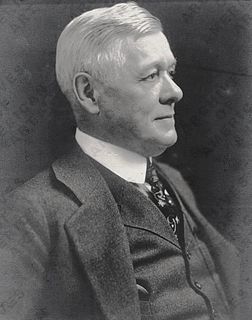
John Massey Rhind was a Scottish-American sculptor. Among Rhind's better known works is the marble statue of Dr. Crawford W. Long located in the National Statuary Hall Collection in Washington D.C. (1926).

Lipstick (Ascending) on Caterpillar Tracks is a weathering steel sculpture by Claes Oldenburg. It is located at Morse College Courtyard, at Yale University, in New Haven, Connecticut.
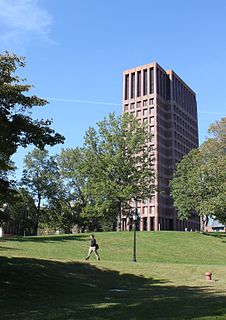
Science Hill is a planning precinct of the Yale University campus primarily devoted to physical and biological sciences. It is located in the Prospect Hill neighborhood of New Haven, Connecticut.























